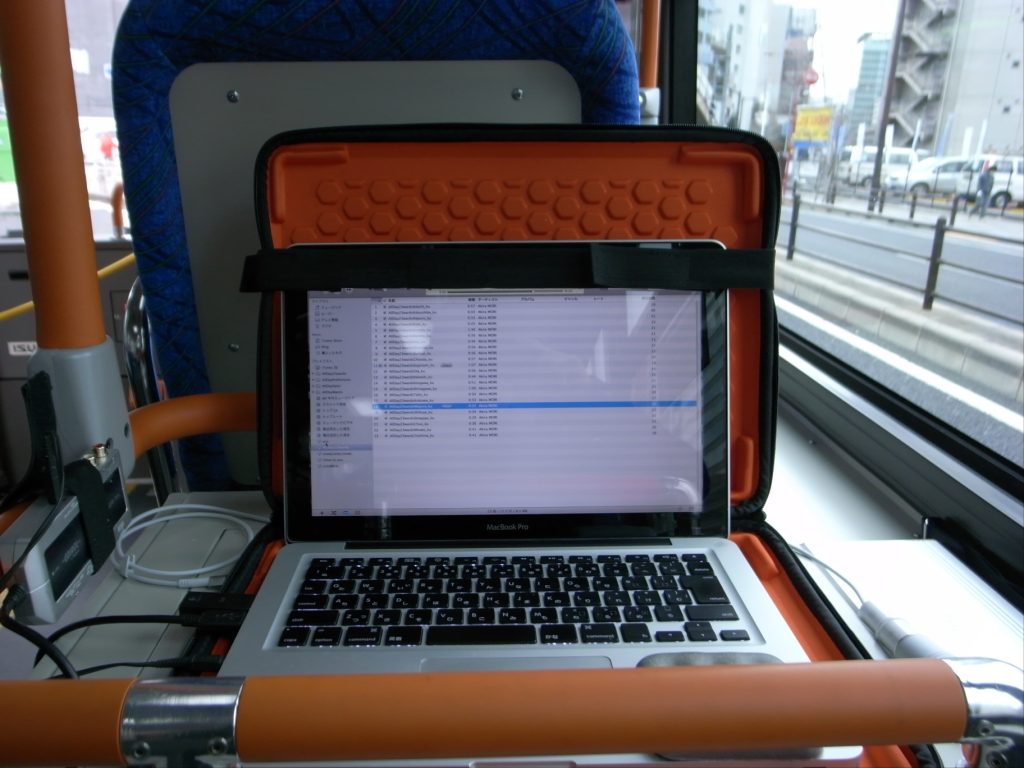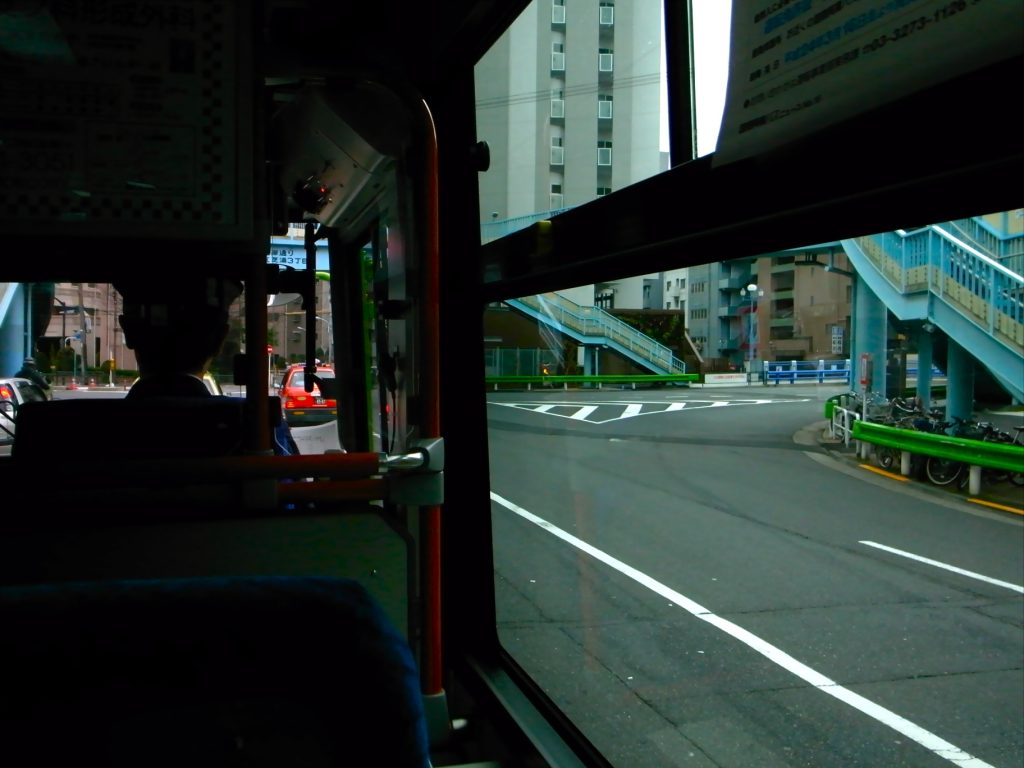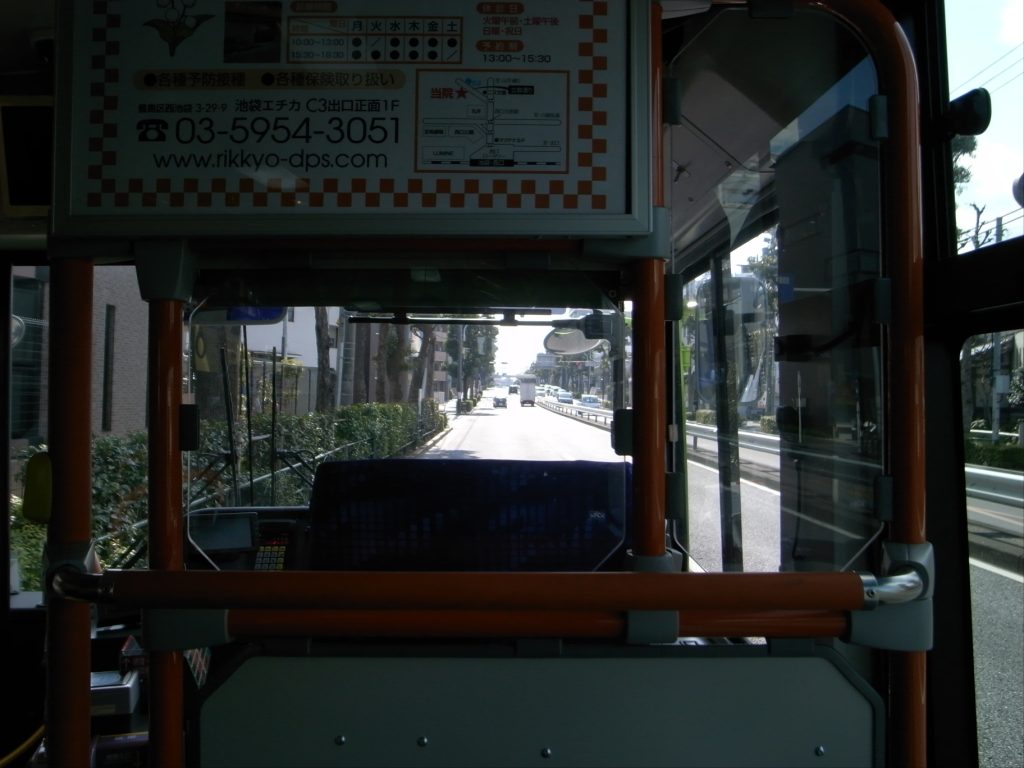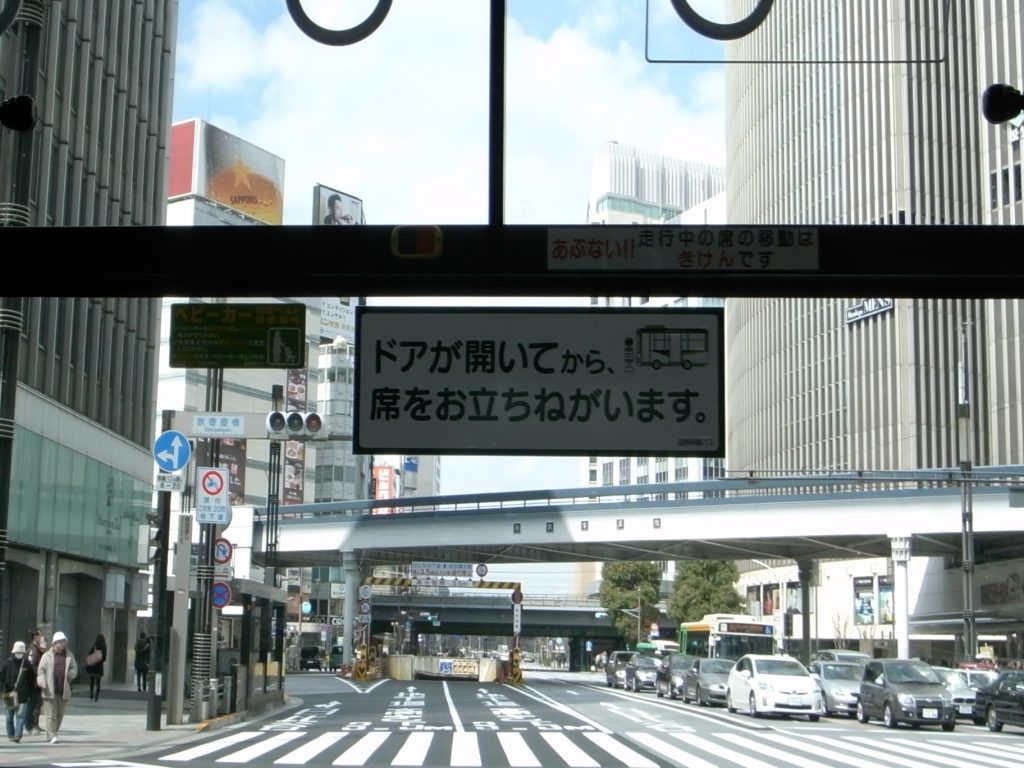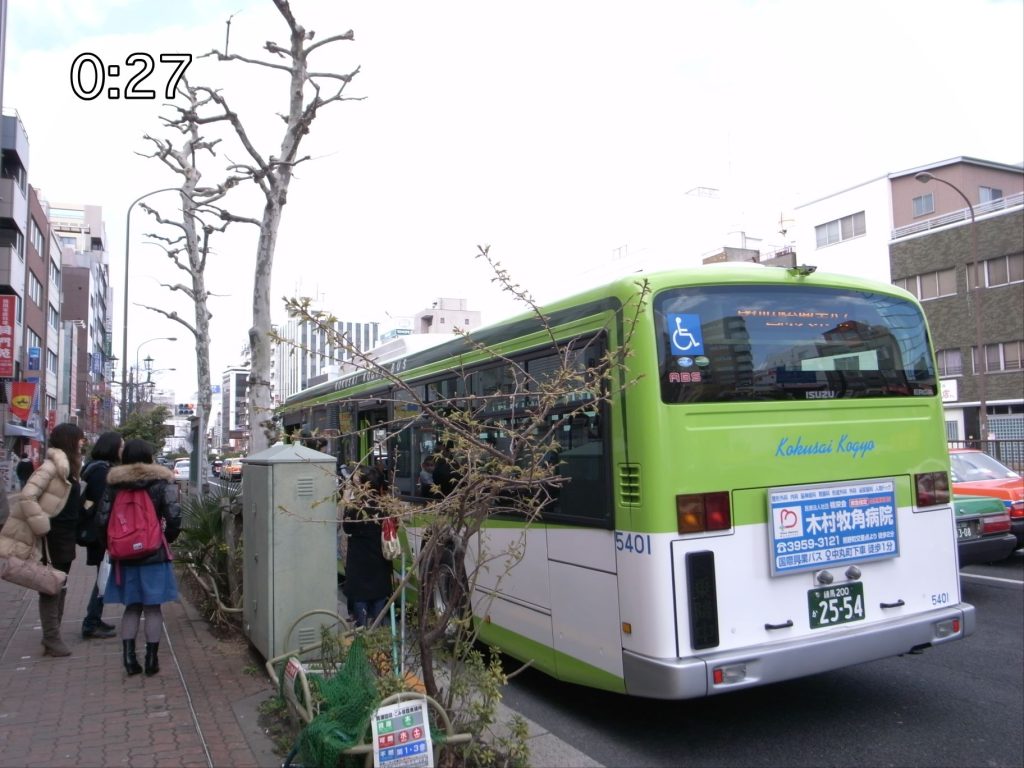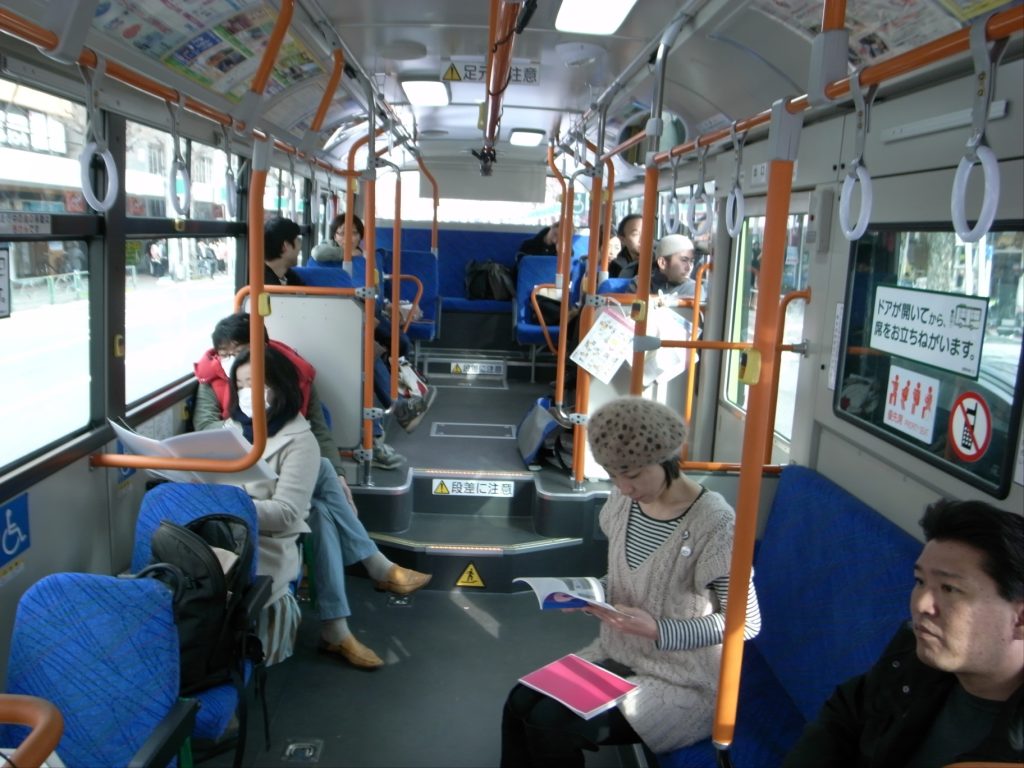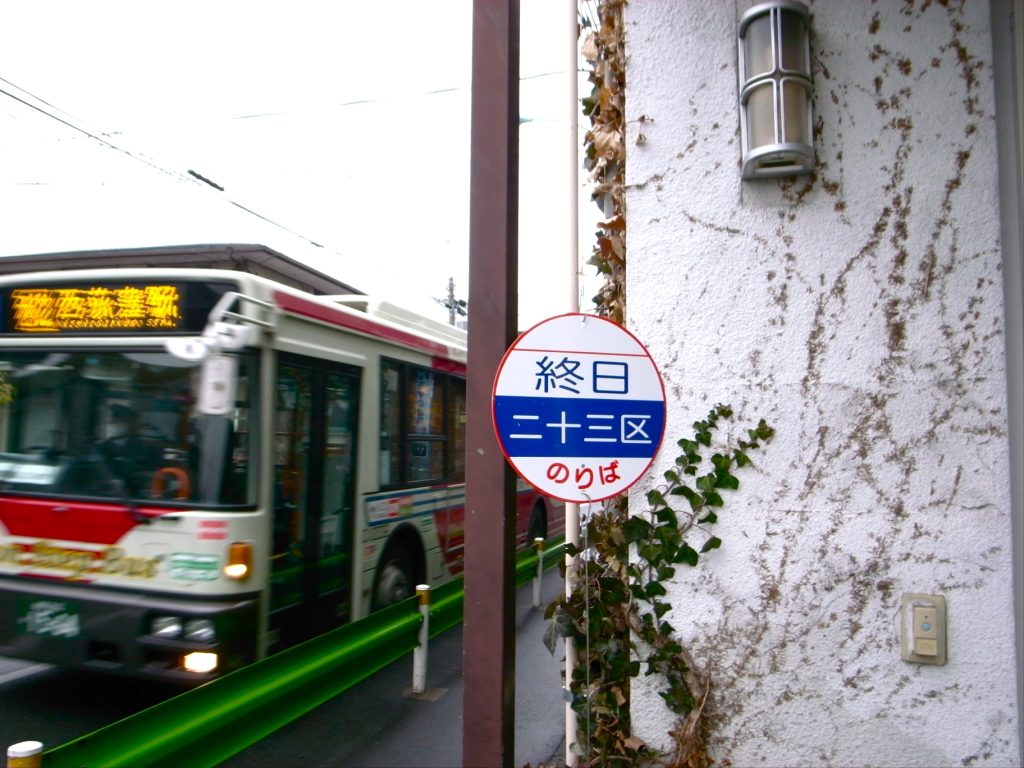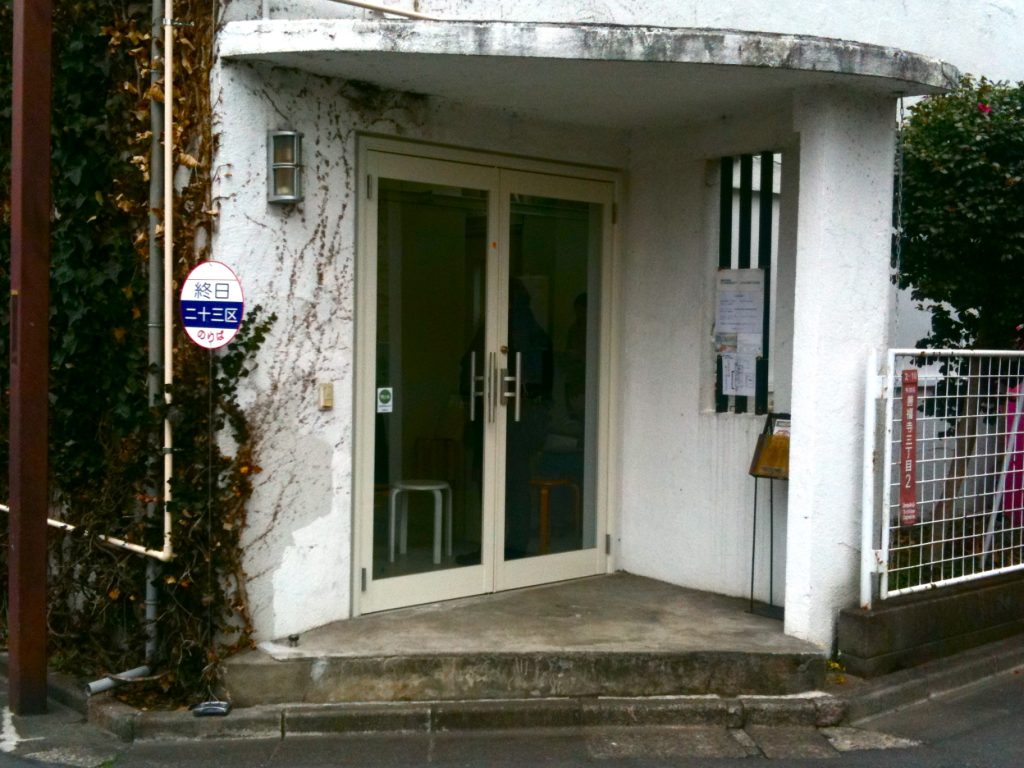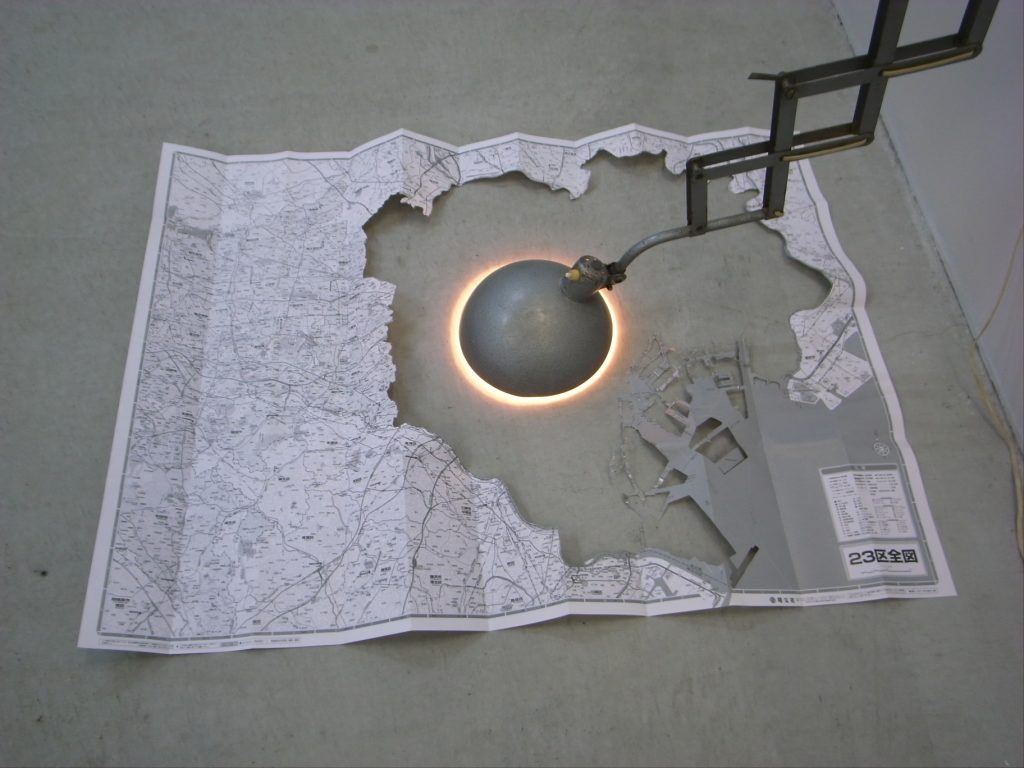終日二十三区(2012) 2011年3月11日震災直後、都内で公共交通機関が軒並み運行停止となり幹線道路は渋滞を 引き起こし 帰宅困難者が多数発生した。 私は この事実と、自身の郷里石巻の交通機関の現状を重ね合わせ、既存の公共交通機関が停止した際、個人的に選び優先される仕組みについて考えを巡らせた。私が芸術活動を通じて出会った人々、そして都市滞在型のアーティストインレジデンス活動を推進している遊工房アートスペースが、お互いの情報環境を基に巡る乗合バス・ルートを2012年3月11日に東京23区で運行した。乗客がバスに乗り入れる度に、非常事態を想定したテストの為に毎夕流れる、防災行政無線の音楽が車内に鳴る。その音は、日常が確かに毎日更新されていることの証でもある。バスの運行状況が音声によってギャラリー内に中継された。バスが17時にギャラリーに到着した後、会場来訪者と乗客が車座にて3月11日を出発点に様々な意見交換を行なった。 AllDay23wards(2012) Directly after the earthquake on Mar. 11, 2011, all public transportation in the city was brought to a stop all at once, and heavy congestion on main highways occurred as commuters in great number faced the difficult task of returning home. Considering this reality and the present state of transportation facilities in their hometown of Ishinomaki, I started to consider a mechanism which prioritizes the individual when existing public transportation fails. Through the mutual information environment created between Akira MORI and Youkobo Art Space, an urban-style artist in residence, a bus taking a route through all 23 wards of Tokyo on Mar. 11, 2012 collected passengers whom the artists have met through their art artistic activities. When the passengers ride on this bus, music from disaster prevention loudspeakers around the city played every evening to test the system in case of a state of emergency will be heard. This sound is confirmation that the everyday is indeed in a state of renewal. The conditions inside the bus relayed as sound to the gallery space. As a point of departure, after the planned arrival of the bus at 17:00 the visitors to the gallery and the passengers of the bus sat inside to exchange opinions about Mar. 11.



